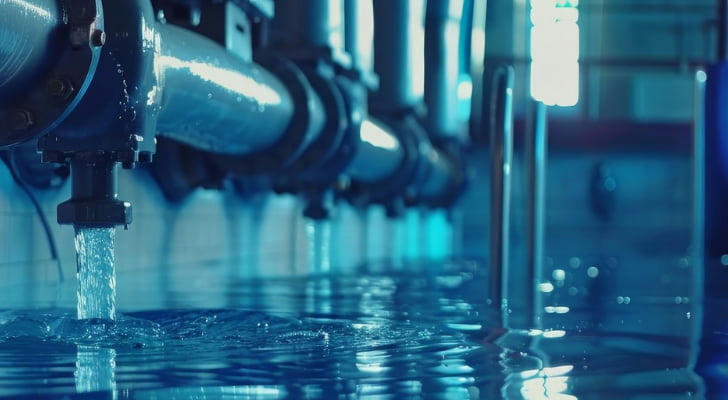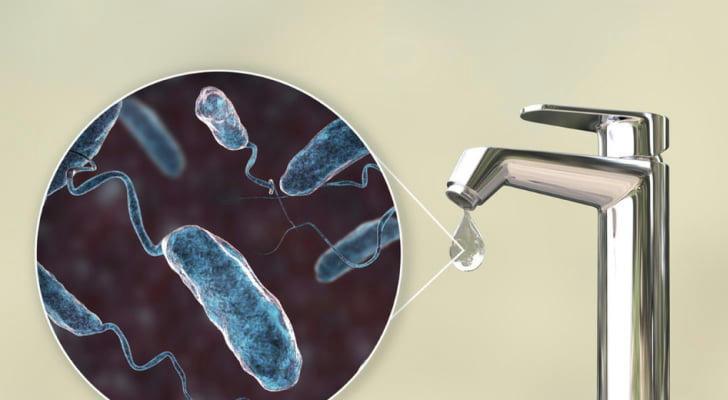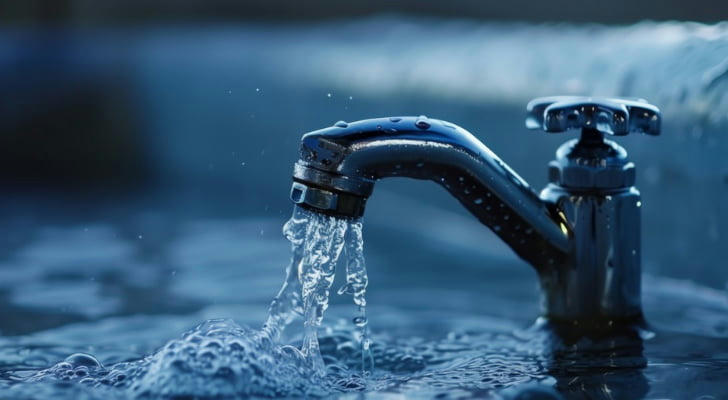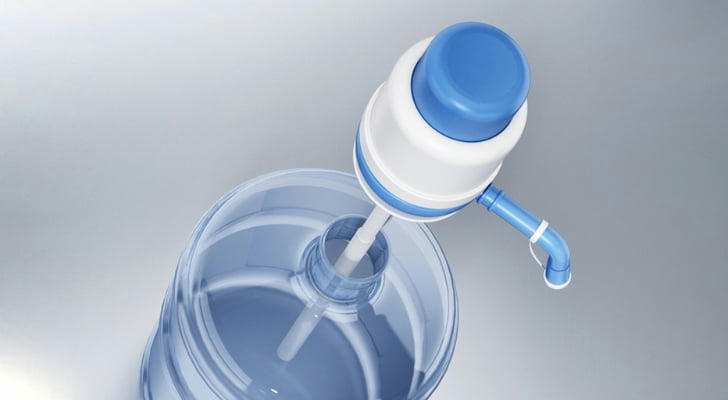Is Your Tap Water Safe? What You Need to Know 🚰🔍

When you turn on the tap and let the water flow, you probably don’t give it much thought. But have you ever wondered if the water you’re drinking is actually safe? Tap water is something we all rely on daily, yet many people don’t realize that water quality can vary greatly depending on where you live. From harmful chemicals to bacteria, your tap water might be contaminated without you even knowing it. So, how can you be sure that your water is safe to drink, cook with, and bathe in?
In this article, we’ll break down everything you need to know about tap water safety, including common contaminants, how to test your water, and what steps you can take to ensure your water is safe.
1. What’s in Your Tap Water? Common Contaminants to Watch Out For 💧⚠️
You might think that tap water is universally safe to drink, but unfortunately, that's not always the case. Over the years, water supplies have been compromised by a number of different contaminants. Here's a look at some of the most common pollutants found in tap water:
Lead: A Dangerous Threat to Health
One of the most well-known contaminants is lead. Lead can leach into tap water through old plumbing pipes, particularly in homes built before 1986. Even low levels of lead exposure can be harmful, especially to young children, pregnant women, and people with pre-existing health conditions. Lead poisoning can cause developmental delays, learning disabilities, and other serious health issues.
Chlorine and Chloramine: Disinfection Byproducts
Chlorine and chloramine are commonly used to disinfect water, killing harmful bacteria and pathogens. While these chemicals are effective at keeping water safe from disease, they can also cause skin irritation and an unpleasant taste. Some people may also be sensitive to these chemicals and experience respiratory issues when inhaled.
PFAS (Per- and Polyfluoroalkyl Substances): The Forever Chemicals
PFAS, also known as "forever chemicals," are a group of chemicals that don’t break down in the environment. These substances are commonly found in firefighting foam, non-stick cookware, and water-repellent clothing. PFAS can contaminate water supplies and have been linked to a variety of health issues, including liver damage, immune system problems, and an increased risk of cancer.
Pesticides and Herbicides: Agricultural Runoff
In agricultural areas, pesticides and herbicides are commonly used to protect crops from pests. Unfortunately, these chemicals can seep into groundwater and eventually make their way into tap water. Long-term exposure to pesticides has been associated with various health problems, including hormone disruption and increased cancer risk.
Microorganisms: Bacteria and Viruses
Microorganisms like E. coli, Salmonella, and Giardia can also be present in tap water, particularly in areas with outdated or malfunctioning water treatment systems. These bacteria and viruses can cause a wide range of illnesses, from stomach cramps to more serious infections, especially in vulnerable populations such as the elderly and those with weakened immune systems.

2. How Do Water Treatment Plants Keep Your Water Safe? 🏭💦
Water treatment plants are responsible for making sure the water that flows into your home is safe to drink. They use a variety of methods to clean and disinfect water, including filtration, chemical treatment, and disinfection. Here's how the process generally works:
Step 1: Coagulation and Flocculation
This is the first step where chemicals are added to the water to help particles like dirt and debris stick together and form larger clumps called "flocs."
Step 2: Sedimentation
The water then sits in large tanks where the flocs settle at the bottom, leaving the clearer water on top.
Step 3: Filtration
The clear water is then passed through filters made of sand, gravel, and charcoal to remove smaller particles.
Step 4: Disinfection
Finally, the water is disinfected with chlorine, ozone, or ultraviolet light to kill any remaining bacteria, viruses, or other pathogens.
Although most water treatment plants in the U.S. meet rigorous safety standards, the process isn’t foolproof, and some contaminants can still make it into your tap water.
3. How to Test Your Tap Water: Is It Really Safe? 🧪🔬
The only way to know for sure if your tap water is safe is to test it. There are several methods to test your water quality, ranging from DIY home kits to professional testing services. Here's how you can get started:
Home Water Testing Kits
DIY kits are available at most home improvement stores or online. These kits typically test for common contaminants like lead, chlorine, hardness, and bacteria. They are relatively easy to use – just follow the instructions, dip the test strips into a water sample, and wait for the results. However, these tests are often not as comprehensive as lab testing.
Professional Water Testing Services
If you want a more accurate and thorough test, you can hire a professional water testing service. These services are usually offered by private labs or local water authorities. They will test for a wide range of contaminants, including heavy metals, pesticides, bacteria, and more. Depending on the complexity of the test, these services can cost anywhere from $50 to $200.
Know Your Local Water Quality Report
In the U.S., public water systems are required to provide consumers with an Annual Water Quality Report, also known as a Consumer Confidence Report (CCR). This report contains detailed information about the water quality in your area, including the levels of various contaminants and whether they meet safety standards. You can often find these reports on your water supplier’s website or by calling them directly.

4. What Can You Do to Improve Your Tap Water Quality? 💧🔧
If your tap water comes up short in a test, don’t panic! There are plenty of options for improving water quality. Here’s how you can take matters into your own hands:
Water Filters: Your First Line of Defense
One of the easiest ways to improve the quality of your tap water is by installing a water filter. There are several types of water filters to choose from:
Activated Carbon Filters: These filters are excellent at removing chlorine, chlorine byproducts, and certain volatile organic compounds (VOCs). They are available as pitchers, faucet-mounted units, and under-sink filters.
Reverse Osmosis (RO) Systems: RO filters are highly effective at removing heavy metals, PFAS, and other contaminants. These systems are typically installed under the sink and can filter large volumes of water.
Whole-House Filtration Systems: If you're looking to filter all the water in your home, a whole-house filtration system might be the right choice. These systems filter the water before it even enters your pipes, ensuring that all water used in the house is free from contaminants.
Boiling Water
If you suspect bacterial contamination in your water, boiling is an effective way to kill harmful microorganisms. Boil your water for at least one minute to ensure it’s safe to drink. This method is especially useful if you're traveling to places with questionable water quality.
5. When Should You Consider Bottled Water or a Water Delivery Service? 🥤🚚
While tap water is generally safe in the U.S., there are cases where it may be a good idea to switch to bottled water or a water delivery service, at least temporarily. Here are some scenarios when this might be necessary:
After a Natural Disaster
In areas affected by floods, earthquakes, or other natural disasters, water supplies may become contaminated. During such times, it’s important to rely on bottled water until the water supply is deemed safe again.
During Renovations
If you’re doing major renovations in your home that involve plumbing work, your water quality could be temporarily compromised. In such cases, it’s best to switch to bottled water until the plumbing is finished and everything has been properly sanitized.

Conclusion: Stay Informed, Stay Safe 💧
Having access to clean, safe tap water is a privilege that we often take for granted. While most water in the U.S. is treated to meet safety standards, there are still some potential risks lurking in our pipes. By understanding common contaminants, testing your water, and taking steps to improve its quality, you can protect yourself and your family from harmful substances.
So, the next time you fill up your glass, take a moment to consider the quality of the water inside. Whether it's upgrading your filtration system or simply staying informed about local water quality reports, making sure your water is safe to drink is a small but important step towards a healthier home.
Stay hydrated, stay safe, and always be aware of what’s flowing from your tap! 🌊🚰
